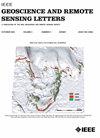Late Winter Observations of Sea Ice Pressure Ridge Sail Height
IF 4
3区 地球科学
Q2 ENGINEERING, ELECTRICAL & ELECTRONIC
引用次数: 7
Abstract
Analysis of high-resolution imagery acquired by the Digital Mapping System during annual, late-winter NASA Operation IceBridge surveys of Arctic sea ice between 2010 and 2018 reveals that pressure ridge sail heights (晚冬海冰气压脊帆高观测
对数字测绘系统在2010年至2018年期间NASA冰桥行动年度冬末北极海冰调查期间获得的高分辨率图像进行的分析显示,压力脊帆高(${H} _{\mathbf {S}}$)在区域和年际上都有所不同。我们发现北极中部(CA)和波弗特/楚科奇海地区的${H} _{\mathbf {S}}$分布存在显著差异。我们的研究结果表明,冰类型的差异发生在${H} _{\mathbf {S}}$分布的尾部,${H} _{\mathbf {S}}$的第95和99百分位数是形成压力脊的主要冰类型的有力指标。在研究期的前半段,${H} _{\mathbf {S}}$增加,在2015年和2016年冬季观测到最大的帆,之后${H} _{\mathbf {S}}$下降。这表明变形最严重的海冰可能已经漂移到调查区域之外,并离开了南极区。我们对过去十年来北极西部海冰变形的年际和区域变化的分析提供了对帆高的更好理解,这将有助于推进海冰模式中的脊参数化。
本文章由计算机程序翻译,如有差异,请以英文原文为准。
求助全文
约1分钟内获得全文
求助全文
来源期刊

IEEE Geoscience and Remote Sensing Letters
工程技术-地球化学与地球物理
CiteScore
7.60
自引率
12.50%
发文量
1113
审稿时长
3.4 months
期刊介绍:
IEEE Geoscience and Remote Sensing Letters (GRSL) is a monthly publication for short papers (maximum length 5 pages) addressing new ideas and formative concepts in remote sensing as well as important new and timely results and concepts. Papers should relate to the theory, concepts and techniques of science and engineering as applied to sensing the earth, oceans, atmosphere, and space, and the processing, interpretation, and dissemination of this information. The technical content of papers must be both new and significant. Experimental data must be complete and include sufficient description of experimental apparatus, methods, and relevant experimental conditions. GRSL encourages the incorporation of "extended objects" or "multimedia" such as animations to enhance the shorter papers.
 求助内容:
求助内容: 应助结果提醒方式:
应助结果提醒方式:


